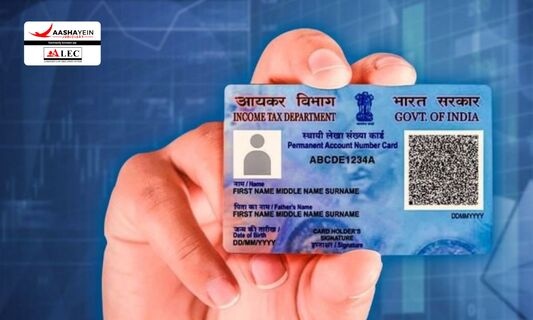On November 25, 2024, the Cabinet Committee on Economic Affairs (CCEA) approved the PAN 2.0 Project for the Income Tax Department with a budget of ₹1,435 crore. The project focuses on upgrading PAN cards with QR codes to establish a completely paperless and online system in India.
You can also read the latest judgment by visiting [Latest Judgment].
For more information, visit [Aashayein Enquiry Section]
Understanding what is PAN 2.0
PAN Card 2.0 is an e-governance initiative designed to modernize the taxpayer registration process using advanced technology. It aims to transform PAN and TAN services by offering taxpayers a smoother and more efficient digital experience. This initiative upgrades the current Permanent Account Number (PAN) system by integrating PAN validation and other PAN/TAN services into a single, paperless platform. It aligns with the objectives of the Digital India initiative, promoting seamless digital governance.
The PAN 2.0 project reflects the government’s vision under Digital India by enabling PAN to serve as a universal identifier across various digital systems of designated government institutions. It also focuses on enhancing cybersecurity, meeting the needs of businesses, and improving grievance redressal mechanisms.
What are the features of PAN 2.0
The PAN 2.0 program aims to modernize the existing PAN system by using advanced technology to improve productivity and streamline operations. It seeks to provide taxpayers with a more efficient and convenient experience by upgrading the current framework. A key feature of PAN 2.0 is the inclusion of QR codes on PAN cards. This will enable quick verification and instant access to taxpayer information, making the process faster and more reliable. Additionally, all PAN-related services will be integrated into a single digital platform, allowing users to manage their accounts seamlessly in one place.
To ensure the security of taxpayer data, PAN 2.0 will incorporate enhanced cybersecurity measures to prevent data breaches and unauthorized access. The program will also introduce a PAN data vault, providing a secure storage system for entities handling PAN-related information.
What will happen to existing PAN cards
As per the FAQs issued by the Finance Ministry on Tuesday, existing PAN cards will remain valid under the PAN 2.0 system. PAN holders can choose to update their cards free of charge, but it is not mandatory to apply for a new one. The PAN number will remain unchanged.
Applicants will receive an electronic PAN on their registered email address. The processes for allotting, updating, or correcting PAN details will also be free. However, those who wish to receive a physical PAN card will need to pay a nominal fee of ₹50 for domestic delivery. For international delivery, a fee of ₹15 plus applicable postal charges will apply.
How to apply for PAN 2.0
Citizens with an existing PAN card will be able to apply for the upgraded PAN Card 2.0 through a unified portal, which the government is yet to launch. This upgrade will include new QR code features and will be available at no additional cost. However, the government has not announced the exact launch date for PAN 2.0. Once the portal is live, citizens can apply for the upgraded PAN card for free, and the platform will also focus on resolving grievances related to PAN services.
The PAN 2.0 Project aims to enhance India's tax system by making it more secure, efficient, and accessible for both individuals and businesses. It seeks to establish PAN as a universal identifier for all digital interactions across government platforms, simplifying compliance processes. Additionally, the project will introduce a centralized portal for all PAN-related services, along with strengthened cybersecurity measures to ensure the safety of user data.
The process to apply for the new PAN 2.0 is-
To apply for PAN Card 2.0, individuals can follow these steps once the unified portal is launched:
- Access the Unified Portal: Visit the newly launched PAN 2.0 platform, which will serve as a single portal for all PAN and TAN-related services.
- Provide Personal Details: Fill in the required fields with accurate personal information, such as name, date of birth, and contact details.
- Upload Supporting Documents: Attach scanned copies of necessary documents, including identity proof, address proof, and proof of date of birth.
- Submit the Application: Review the entered information carefully and securely submit the application through the portal.

